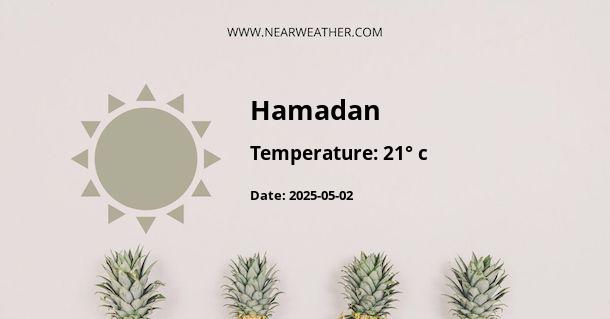A Comprehensive Guide to Hamadan's Weather and Climate
Hamadan, the capital city of Hamadan Province in Iran, is a city steeped in rich history and a climate that changes with each season. Situated at an elevation of approximately 1,850 meters above sea level, Hamadan's weather is often cooler than many of Iran's other cities. It boasts a semi-arid climate with a significant temperature difference between summer and winter.
Overview of Hamadan's Annual Climate
Hamadan experiences a semi-arid climate (Köppen climate classification: BSk). This means that the city sees hot, dry summers and cold, wet winters. The average annual temperature is about 11.8 °C (53.2 °F), with rainfall averaging at 334 mm per year.
"Despite its semi-arid climate, Hamadan sees a fair amount of rainfall, mostly during the colder months. Snowfall can also occur during winter, adding a picturesque layer of white to the city's landscape."
Temperature
The temperature in Hamadan varies significantly throughout the year. The hottest month is July, with an average high temperature of 31.6 °C (88.9 °F), while the coldest month is January, with an average low temperature of -5.7 °C (21.7 °F).
Precipitation
Despite being classified as a semi-arid climate, Hamadan sees a good amount of rainfall, especially during the colder months. November is the wettest month with about 56 mm of rainfall, while the driest month is August with about 1 mm of rainfall.
Seasonal Weather in Hamadan
Spring (March to May)
Spring in Hamadan sees moderate temperatures with highs ranging from 15.3 °C (59.5 °F) in March to 25.9 °C (78.6 °F) in May. Rainfall during this season is moderate, making it an excellent time for outdoor activities.
Summer (June to August)
Summer is typically hot and dry, with the average high temperature peaking at 31.6 °C (88.9 °F) in July. Despite the heat, the nights can still be relatively cool due to the city's high altitude, making it a comfortable time for visitors.
Fall (September to November)
Fall sees a gradual decrease in temperature, with highs ranging from 29.7 °C (85.5 °F) in September to 13.6 °C (56.5 °F) in November. Rainfall begins to increase during this season, particularly in November.
Winter (December to February)
Winter in Hamadan is cold and wet, with temperatures often dropping below freezing point. Snowfall can occur during this season, particularly in January and February. Despite the cold, this season offers a unique charm with snow-covered landscapes.
Conclusion
Hamadan's climate offers a unique experience for each season. From the hot, dry summers to the cold, snowy winters, there is always something to look forward to in this historic city. Understanding the weather patterns will help you plan your visit accordingly, ensuring a comfortable and enjoyable stay in Hamadan.
References
- "Climate: Hamadan", Climate-Data.org, https://en.climate-data.org/asia/iran/hamadan/hamadan-1739/
- "Hamadan", Britannica, https://www.britannica.com/place/Hamadan-Iran
A - Hamadan's Latitude is 34.799221 & Longitude is 48.514561.
A - Weather in Hamadan is 9° today.
A - Climate Conditions in Hamadan shows clear sky today.
A - Humidity in Hamadan is 38% today.
A - Wind speed in Hamadan is 7.06 km/h, flowing at 37° wind direction. today.
